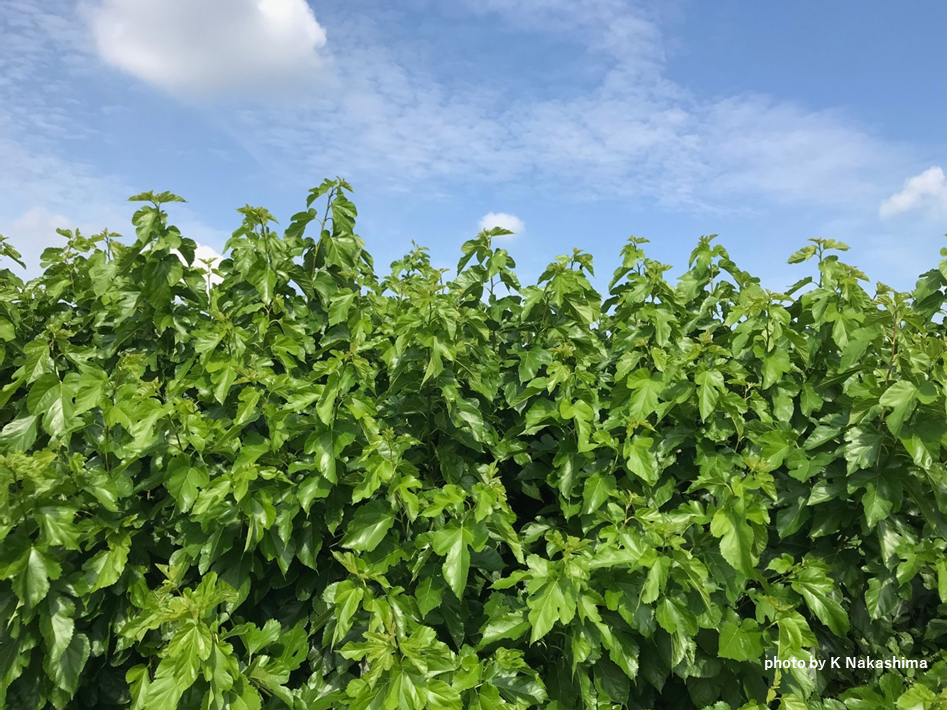Pick Up
843. Preparation Method and Fermentation Mechanism of Fodder Tree Silage

843. Preparation Method and Fermentation Mechanism of Fodder Tree Silage
As the global economy steadily evolves and the population continues to expand, there is an ever-growing appetite for livestock-derived products, including meat, eggs, and milk. However, the supply chain for livestock production heavily relies on the availability of feed, and this crucial resource is distributed disparately across regions. Japan, for instance, maintains a feed self-sufficiency rate of less than 30%, while numerous countries in Southeast Asia, South Asia, and other regions are also facing feed shortages. To overcome this problem, there is an urgent need to produce self-sufficient feed and develop innovative methods to harness the nutritional potential of natural feed resources.
On the other hand, in semi-arid regions such as the tropical savannas of Sub-Saharan Africa, small farmers own a few livestock such as cattle, sheep, goats, etc. Due to limited economic resources, they grow or purchase feed for their livestock sparingly. Most of the fodder consists of crop residues, wild grasses that are harvested and fed to livestock at home or grazed by livestock, and fodder trees (woody plants whose branches and leaves are used as fodder). The use of these forages is highly seasonal; crop residues harvested at the beginning of the dry season are gone by the end of the dry season. Wild grasses and fodder trees grow abundantly during the rainy season, but wilt and lose their leaves during the dry season. As a result, both the quantity and nutritional value of livestock fodder decreases during the dry season, leading to a reduction in livestock weight and livestock productivity. As a result, producing high quality fodder throughout the year using local fodder resources without incurring significant costs is a pressing challenge.
JIRCAS has conducted research in Mozambique in Sub-Saharan Africa, aimed at efficiently securing food and feed, as well as improving income, through the integration of crop cultivation and livestock farming by small-scale farmers. We have shown that it is possible to improve milk production and profitability at the same time by blending locally available feed resources such as crop residues and forage crops, preparing fermented TMR, and feeding it to dairy cows. However, to further enhance nutritional value, some purchased ingredients were included in the feed mixture. Therefore, there is a demand for feed production that can further reduce costs for small-scale farmers.
In Mozambique and other countries in Sub-Saharan Africa, while arable land is expanding due to population growth, there are also large areas of rangeland that are not suitable for conversion to arable land. Fodder trees grow wild in pastures and along roadsides, and are often planted in inhabited areas. Some of the most important fodder trees used worldwide are mulberry tree (Morus alba) of the Moraceae family, paper mulberry tree (Broussonetia papyrifera), horseradish tree (Moringa oleifera) of the Moringaceae family, and gliricidia tree (Gliricidia sepium) of the Leguminosae family. These trees have several characteristics in common. For example, they are drought resistant, can be propagated by cuttings, thrive in a wide range of soil pH conditions, have high growth rates and yields, low planting costs, and are preferred by livestock as fodder. In addition, the fresh branches and leaves of these fodder trees are rich in protein, fat, bioactive compounds, vitamins, and macro minerals such as calcium and phosphorus compared to crop residues from the grass family and wild plants. They can compensate for the nutritional deficiencies of other forage resources. However, during the dry season, the branches and leaves become woody and shed, resulting in a significant loss of nutrients. Therefore, it is necessary to preserve and utilize the quantity and nutrients of these branches and leaves as fodder during the dry season without drying them, as they are abundant during the rainy season.
Therefore, we investigated an effective method of preparing silage, a fermented feed, using locally available mulberry trees that can be used as fodder trees to store fresh feed materials for a longer period of time. We also elucidated the dynamic changes in the bacterial flora and the interrelationships among bacterial species before and after fermentation.
This research has shown that it is possible to prepare silage using mulberry tree branches and leaves. Silage quality can be improved by adding lactic acid bacteria and cellulase separately, and a synergistic effect is achieved by adding them together for even greater improvement. Cellulase breaks down the fibrous components into sugars, and lactic acid bacteria use these sugars to multiply, resulting in high-quality silage fermentation. In the process, the beneficial lactic acid bacteria, which are gram-positive, outcompete many gram-negative bacteria that can be pathogenic, and even some lactic acid bacteria that emit certain greenhouse gases, causing them to die (or suppress their growth) while the beneficial lactic acid bacteria themselves multiply significantly.
These results are expected to be applied in the future to improve livestock nutrition during the dry season in semi-arid regions. By utilizing local fodder trees and applying the silage storage technique during the abundant rainy season, it will be possible to provide nutrition during the dry season when it is lacking. This is expected to have a direct impact on improving livestock productivity and farmers' incomes. It will also enable more sustainable livestock production by using local feed resources instead of relying on imports.
These results were published in the international journal Biotechnology for Biofuels and Bioproducts under the title "Cellulase-lactic acid bacteria synergy action regulates silage fermentation of woody plant”.
References
Zhumei Du, Seishi Yamasaki, Tetsuji Oya and Yimin Cai (2023) Cellulase-lactic acid bacteria synergy action regulates silage fermentation of woody plant. Biotechnology for Biofuels and Bioproducts. https://doi.org/10.1186/s13068-023-02368-2
Contributors: CAI Yimin, OYA Tetsuji, YAMASAKI Seishi and NAKAMURA Satoshi (Crop, Livestock and Environment Division), NAKASHIMA Kazuo (Food Program)
